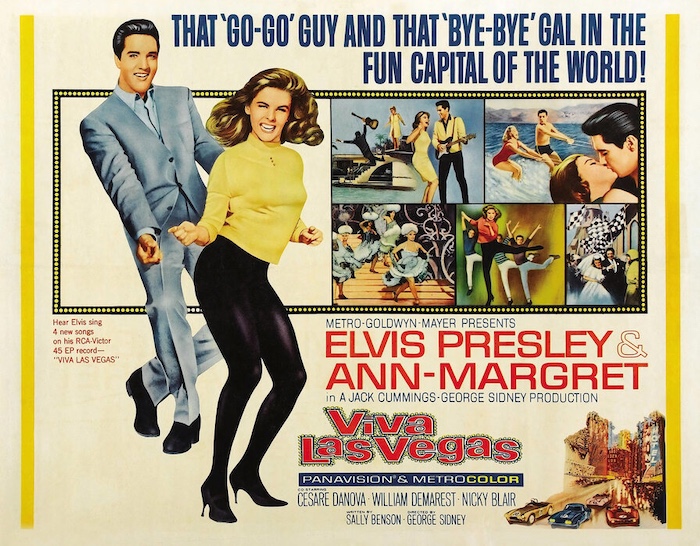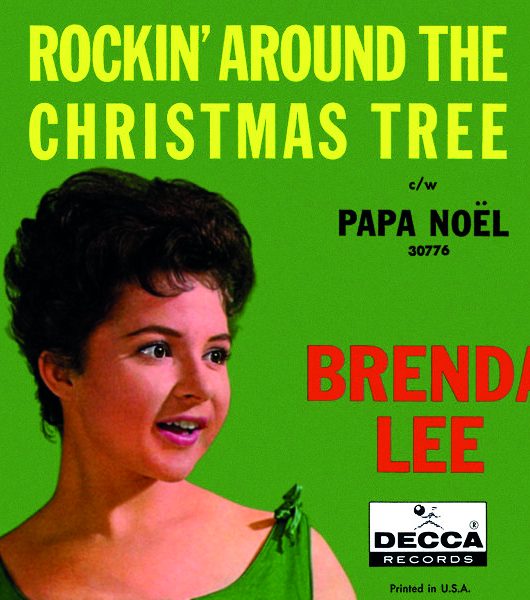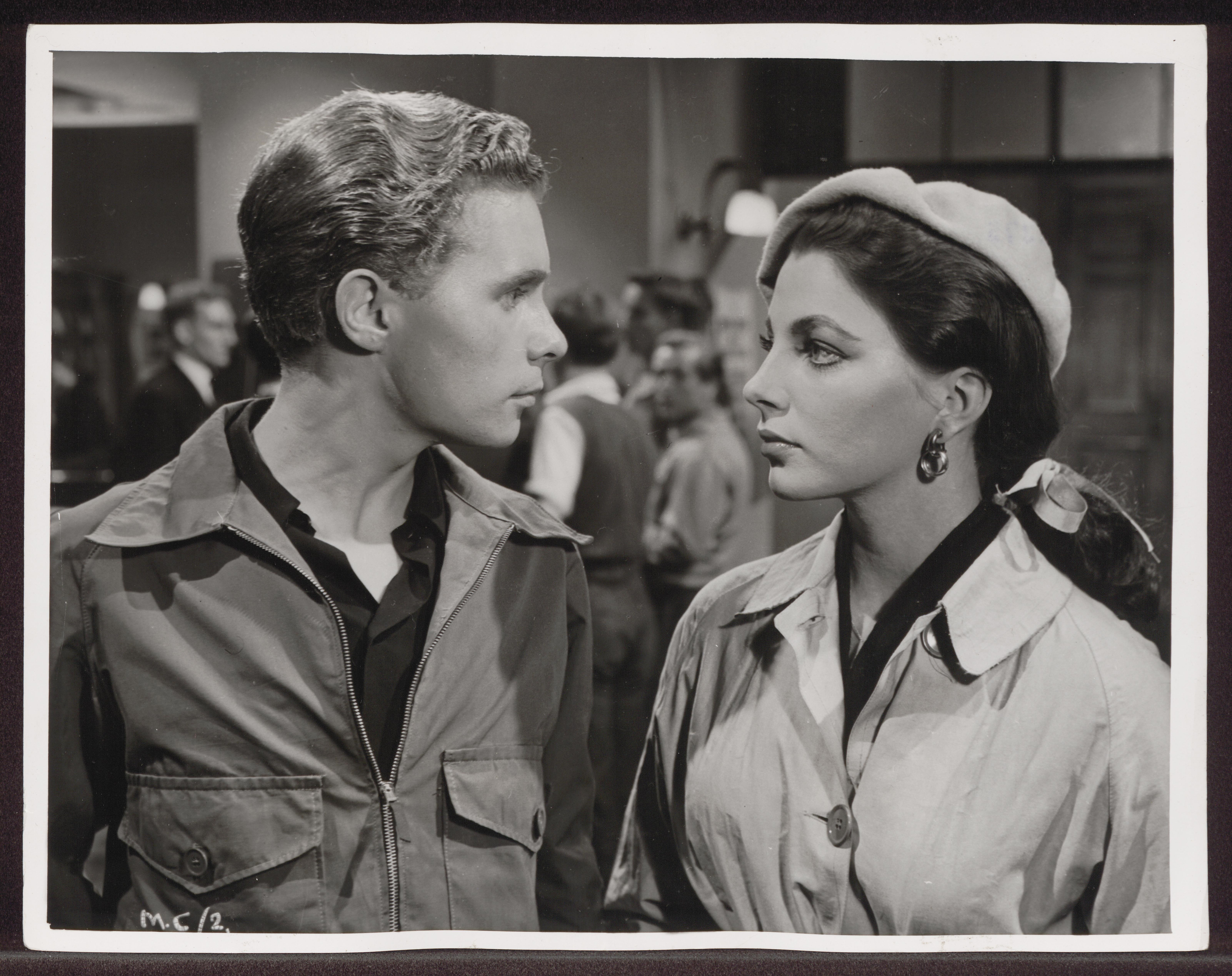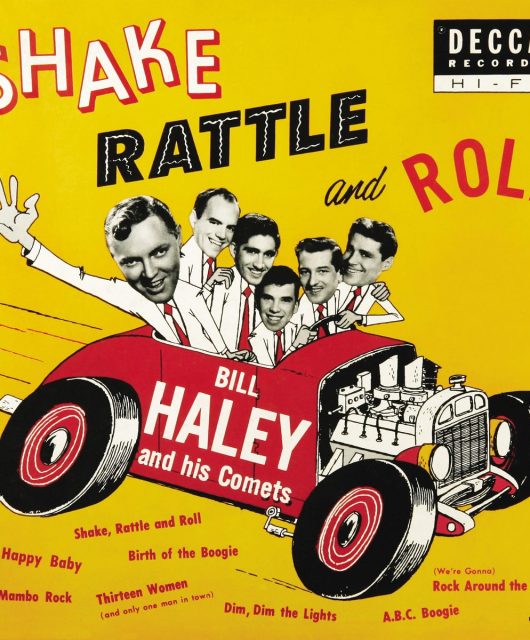For its 60th anniversary, Vintage Rock celebrated one of Elvis Presley’s very best musicals – a film that for once paired him with a leading lady every bit as charismatic as he was… Let’s hear it for Viva Las Vegas.
The general consensus with Elvis’ movies is that it’s only the very early ones which have any real cultural worth. Love Me Tender, Jailhouse Rock and King Creole are all nailed-on classics. After that, so the accepted wisdom goes, Presley’s cinematic output became ever more saccharine, his performances lazier and the songs increasingly forgettable. But how true really is that?
When Variety ran their list of Elvis’ best films in 2022, King Creole was first, but it wasn’t one of those gritty, black and white musical-dramas in second place. Instead, it was the movie that teamed Elvis up with one of his most iconic leading ladies and which introduced him to a city that would one day play a major part in his life – Las Vegas. “If you looked up the term ‘guilty pleasure’ in the Illustrated Dictionary Of Cinema,” Variety wrote, “you’d likely see a photo of Elvis and Ann-Margret shaking their groove things and generating high-potency chemistry in director George Sidney’s well-nigh irresistible extravaganza.”
1964’s Viva Las Vegas then really shouldn’t be as good as it is. Elvis was indeed on a death spiral, film-wise, in the early 60s. His two preceding movies, Fun In Acapulco and Kissin’ Cousins, are nobody’s favourites, while his recording career wasn’t exactly in its imperial phase. Yet there’s a provable alchemy with Viva Las Vegas, a faultless blend of story, casting, and music, that would end up creating not just one of Elvis’ very best movies, but one of the greatest musicals of the 1960s.
Lucky Jackson
What makes Viva Las Vegas’ stellar standing even more staggering is that the movie was written in just 11 days. “That was one of those cases where we had no script and we had a commitment,” director George Sidney is quoted as saying in the book Just Making Movies. “Originally it was something about an Arabian or something… But we turned it around… We changed the whole thing and decided to do it in Las Vegas.”
But then Viva Las Vegas did have somewhat of a higher pedigree than many of Elvis’ musicals. The script was penned by Sally Benson, who certainly wasn’t a hack-for-hire. As a novelist, she’d written the book Meet Me In St. Louis, later made into a box office-busting feature film with Judy Garland, and she’d been one of the scribes on Alfred Hitchcock’s classic 1943 thriller Shadow Of A Doubt. George Sidney, meanwhile, was similarly no journeyman, having helmed some of Hollywood’s most zesty – and profitable – musicals, including Annie Get Your Gun in 1950, 1951’s Show Boat, Kiss Me Kate two years later, and Jupiter’s Darling (1955).
The movie would headline Elvis in one of his best roles as Lucky Jackson, a racing car driver who pitches up in the City of Sin for a race but is forced to work as a waiter to earn money to fix his car when its engine breaks, at the same time falling head over heels for a local swimming pool attendant by the name of Rusty Martin.
Introducing Ann-Margret
As with every Elvis flick, his leading lady was almost as important as the pick of director and songwriters. Chemistry was crucial, and Presley’s premier-league films always pitched him alongside a co-star who could, if not match him for sheer beauty and charisma, at least hold their own.
Enter Ann-Margret. Born in Sweden in 1941, she’d turned heads the year before, in 1963’s George Sidney-directed Bye Bye Birdie. That film, about a rock’n’roll singer (played by Jesse Pearson) who finds himself drafted into the US Army, was inspired by Elvis’ own experiences of being called up. Now both Sidney and Ann-Margret would find themselves working with the real Elvis Presley, and in the actress’ case, it would prove a combustible combination.
The movie historian David Thomson in his New Biographical Dictionary Of Film describes Ann-Margret as “one of the best and most provocative partners Elvis ever had” and it’s true – their chemistry just leaps off the screen. Some may say that it’s simply because both were having an affair during filming, but Elvis had had flings with co-stars before. This was different.
Onscreen Chemistry
But then Elvis had never met any woman so like him. So much so that Ann-Margret was once described as ‘the female Elvis’. By the time of Viva Las Vegas, Ann-Margret had already released several albums as a singer, including collaborations with Chet Atkins and The Jordanaires, while her record label RCA attempted to capitalise on Ann-Margret’s ‘female Elvis’ tag by having her record a version of Heartbreak Hotel. More than any of his previous female co-stars, Presley found himself starring alongside more of a peer in Viva Las Vegas than he’d ever had before.
On and off set, Elvis did little to conceal their affair, and salacious stories began to spring up in many of Hollywood’s gossip columns, causing a worried Priscilla to confront her boyfriend. As always when he was accused of cheating, Elvis simply lied: “She comes round here on weekends on her motorcycle,” he told her (as referenced in the book Being Elvis: A Lonely Life). “She hangs out and jokes with the guys. That’s it.” Unconvinced, Priscilla picked up a flower vase and threw it across the room.
Ann-Margret’s screen charisma was so fiery that even Colonel Tom Parker was alarmed and demanded that two of the actress’ duets with Elvis (You’re The Boss and Today, Tomorrow, And Forever) be cut from the film, fearful as he was that her performance would overshadow his protégé. Neither duet was released until after Elvis’ death. Parker even grumbled to MGM that Elvis’ latest co-star was getting too many close-ups and blamed the film going over budget on the studio spending too much money promoting the actress. This was, he forcefully reminded the producers, ‘an Elvis Presley movie’, not an Ann-Margret one.
‘The Female Elvis’
Yet ‘the female Elvis’ did influence the movie, by recommending her dance instructor David Winters be hired as choreographer. Viva Las Vegas’ dance set pieces are sensational, and more exhilarating than anything Elvis had been involved with since his early films. Just witness C’mon Everybody which has a hip-swinging Elvis performing the Joy Byers-penned song in front of an energetically whirling Ann-Margret, it’s sizzling stuff. Only Parker was wrong – Ann-Margret doesn’t overshadow Elvis, but complements him. For the first time ever, Presley was performing alongside someone as blisteringly charismatic as he was.
Sadly, Ann-Margret is absent from the movie’s signature performance. There are plenty of standout moments in Viva Las Vegas, but the song that came to define the film, and still ranks high in any list of the best Elvis numbers, was the title track, written for the movie by Doc Pomus and Mort Shuman. Okay, it may have been more of a spirited Broadway number than a standard, blues-influenced Elvis song and it may have flopped commercially (US No.29), but its popularity has only grown over the years, and it has since become the unofficial song of the city.
Viva Las Vegas was released on 20 May 1964 to surprisingly tepid reviews. “As pleasant and unimportant as a banana split,” wrote The New York Times, while Variety stated: “Beyond several flashy musical numbers, a glamorous locale, and one electrifying auto race sequence, the production is a pretty trite and heavy-handed affair”. (They’d change their minds over half a century later, of course.)
Electric Energy
In spite of the notices, Viva Las Vegas earned more than $9 million at the box office. But its reputation has swelled in the decades since. On Rotten Tomatoes, it currently holds an approval rating of 87%, with the site’s consensus writing: “Ann-Margret keeps Elvis on his toes and together they elevate Viva Las Vegas into a naughty and rockin’ mild delight.”
Sixty years on, Viva Las Vegas is seen as one of the most vibrant and minxy of all Elvis’ movies, and a reminder quite how impressive an actor he was when he had material he was truly invested in. It’s just a shame that Elvis’ film career after this point really was a succession of increasingly sterile pop vehicles.
Though Presley remained friends with Ann-Margret, he never again shared screen time with her, which was cinema’s loss. One can only speculate how much her hot-blooded presence might have lifted some of those later movies, as well as Elvis’ performances. But in Viva Las Vegas, just for once, Elvis shared the screen with a leading lady every bit as magnetic as himself, and with it created a movie that still crackles with energy and sex appeal six decades on.
For more on Elvis in the movies click here
Read More: Elvis Presley – Silver Screen Songsmiths








